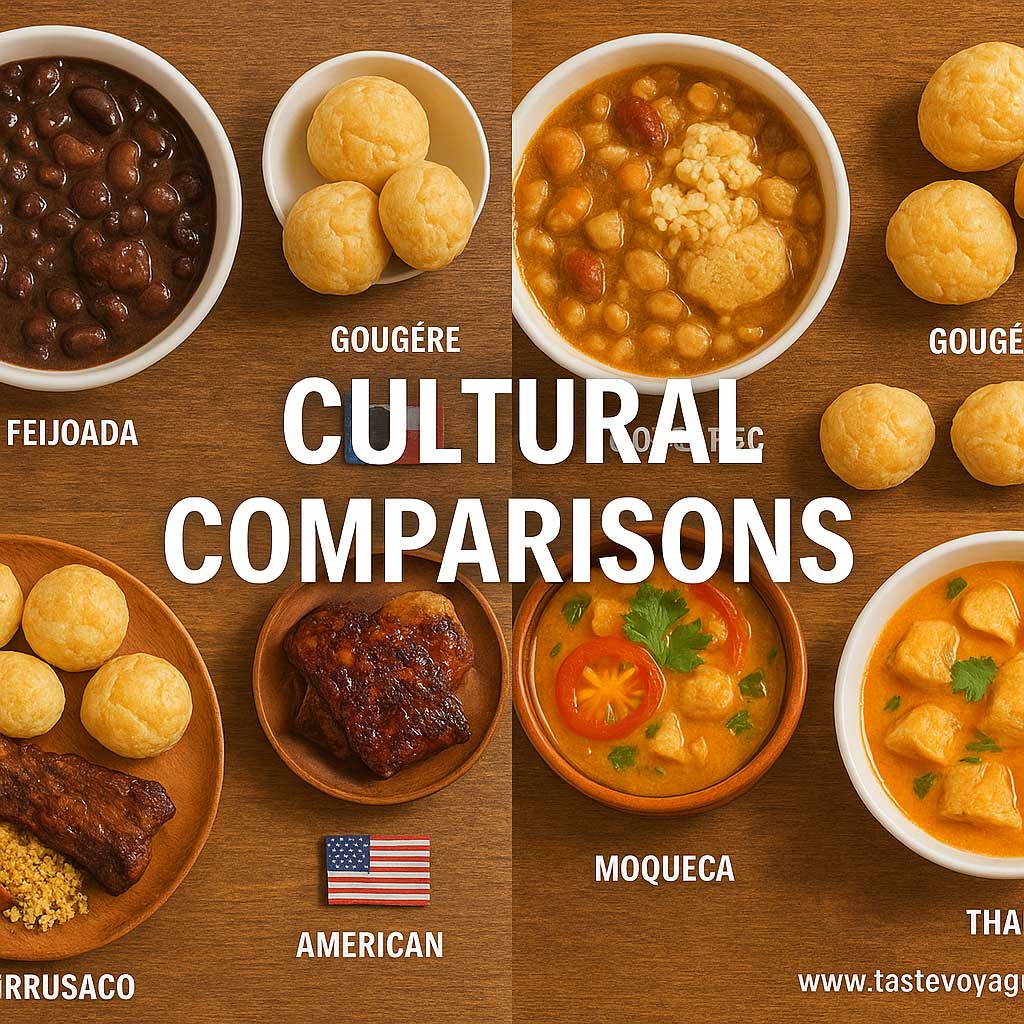Brazilian vs Mexican Cuisine: Top Differences You Must Know
Travel the World Through Food >> Brazilian Cuisine>>Cultural Comparisons>> Brazilian vs Mexican Cuisine: Top Differences You Must Know
Brazilian vs Mexican Cuisine: Top Differences You Must Know
Brazilian vs Mexican Cuisine: Key Differences
Exploring the culinary landscapes of Brazil and Mexico opens a window into two vibrant cultures that cherish their unique flavors and traditions. While both cuisines are celebrated worldwide, they each have distinct characteristics that reflect their rich cultural heritages. Understanding these key differences enriches our appreciation for their culinary significance and the stories they tell through food.
Cultural Roots and Culinary Identity
Brazilian and Mexican cuisines are deeply rooted in their respective histories. Brazilian food reflects a diverse blend of indigenous ingredients and influences from Portuguese settlers. It emphasizes fresh produce, tropical fruits, and hearty meats, showcasing the country’s abundant natural resources. Dishes like feijoada, a black bean Stew with meats, symbolize comfort and community, embodying Brazil’s warm, welcoming spirit.
In contrast, Mexican cuisine boasts a rich tapestry woven from indigenous Mesoamerican ingredients and techniques, complemented by Spanish influences. Corn, beans, chili peppers, and avocados are staples that define Mexican cooking. Tacos, tamales, and moles highlight a tradition of bold flavors and complex sauces, emphasizing a deep connection to indigenous roots and local ingredients.
Signature Flavors and Ingredients
Brazilian Cuisine is known for its use of tropical ingredients such as cassava, coconut, and tropical fruits like passionfruit and acai. These flavors often lend a sweet and savory balance to dishes. The use of garlic and olive oil is prevalent, creating rich, flavorful profiles that highlight freshness.
Mexican cuisine stands out with its vibrant, spicy flavors. Chili peppers, cumin, coriander, and lime are essential components that add depth and heat. Corn is fundamental, whether in tortillas or tamales, serving as the backbone of many dishes. The use of chocolate, particularly in traditional moles, illustrates the complex flavor combinations that define Mexican cooking.
Culinary Techniques and Presentation
Brazilian food often features slow-Cooking Methods and communal dishes that emphasize sharing. Dishes like churrasco (barbecue) and feijoada are served family-style, fostering a sense of togetherness. The presentation tends to be hearty and rustic, focusing on flavor and communal enjoyment.
Mexican cuisine showcases diverse techniques, including grilling, steaming, and frying. The artful layering of flavors in sauces like mole and the meticulous preparation of items like tamales reflect a culinary craftsmanship that values both taste and visual appeal. The vibrant colors and intricate presentation celebrate Mexico’s lively food culture.
Cultural Significance and Food Traditions
In Brazil, food plays a central role in festivals and social gatherings. Celebrations often feature barbecues, fruit salads, and regional specialties that highlight local produce and traditions. Food connects communities and sustains cultural identity across the vast landscape.
Mexico’s culinary traditions are equally rich, often linked to festivities and family rituals. Dishes like tamales and pozole are staples during celebrations, symbolizing unity and cultural pride. The preparation and sharing of food are deeply ingrained in Mexican social life, fostering a sense of belonging and heritage.
Final Thoughts
Brazilian and Mexican cuisines each offer a sensory journey into their unique cultural identities. While both celebrate bold flavors and communal dining, their core ingredients, techniques, and culinary philosophies set them apart. Appreciating these differences allows food enthusiasts to better understand and respect the rich traditions behind each cuisine.
Whether savoring the tropical notes of Brazil’s feijoada or relishing the spicy complexity of Mexican mole, exploring these culinary treasures invites us into worlds filled with history, tradition, and vibrant flavors. Both cuisines continue to inspire chefs and home cooks worldwide, reminding us of the universal language of good food.
By understanding the key differences between Brazilian and Mexican cuisines, you can deepen your appreciation for their culinary artistry. Embrace the flavors, stories, and traditions that make each cuisine a true cultural treasure.
